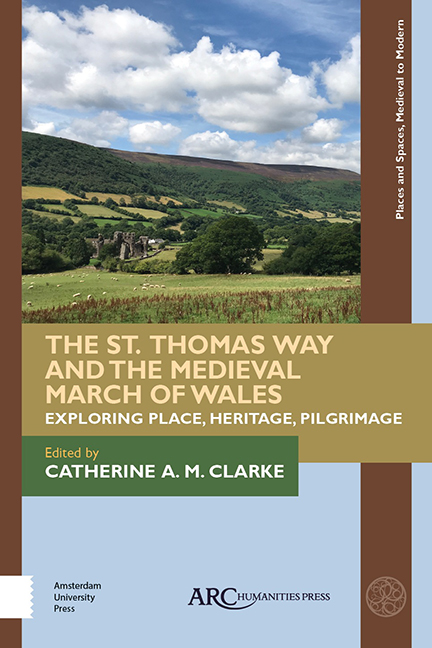Chapter 1 - Changing Roles of Pilgrimage: Retreating, Remembering, Re-enacting
Published online by Cambridge University Press: 20 November 2020
Summary
THE ST. THOMAS Way project re-creates the route of a medieval pilgrimage as a resource for modern culture and recreation. The following discussion will offer some brief reflection on the historical phenomenon of pilgrimage, as well as on how this recreated pilgrimage, innovative in form as well as content, connects to roles of pilgrimage in spiritual, social, and economic life. This is by no means simply a matter of academic interest. Pilgrimage is once again a rapidly growing activity in England and Wales, having significant potential for regional and national economies. Wales, the nation in which the St. Thomas Way commences, has a Faith Tourism Action Plan (2013) initiated at the level of its national assembly government. “Religious tourism and pilgrimage” has its own international research group, established in 2003, which draws together academics and industry professionals. Local projects in infrastructure for pilgrimage tourism are underway in many parts of Britain. Heritage authorities increasingly include pilgrimage as a factor in the interpretation and preservation of churches. Alongside such indicators of economic significance, we can also connect pilgrimage to contemporary spiritual and social needs. Some of these reflect perennial themes, such as journeying to mark transitions in life, or to reflect on society from a liminal space. Other trends arise from more modern or postmodern circumstances. Joining pilgrimages can be a fresh expression of faith, a search for an alternative community, or it may substitute for participation in a declining model of parochial worship. Pilgrimage, being primarily a physical expression of spirituality, can be an inclusive vehicle for social as well as religious investment, as it allows people of diverse motivation to find their own meanings in the same activities.
What is Pilgrimage?
Pilgrimage is a phenomenon in many cultures worldwide. Not all cultures have a term precisely synonymous with the English term “pilgrimage,” but they still evince similar conceptions. Across cultures, pilgrimage journeys are used to re-enact significant past journeys— real or apocryphal. In many cultures, also, journeys are made that mark rites of passage into new stages of life. Journeying to a shrine or other sacred destination via “stations” (staging points, often subsidiary shrines) is also found across a range of cultures.
- Type
- Chapter
- Information
- The St. Thomas Way and the Medieval March of WalesExploring Place, Heritage, Pilgrimage, pp. 25 - 36Publisher: Amsterdam University PressPrint publication year: 2020



